Rau Ram, Southeast Asia’s Cilantro
June 25, 2020 | Updated December 21, 2020
As an Amazon Associate I earn from qualifying purchases.
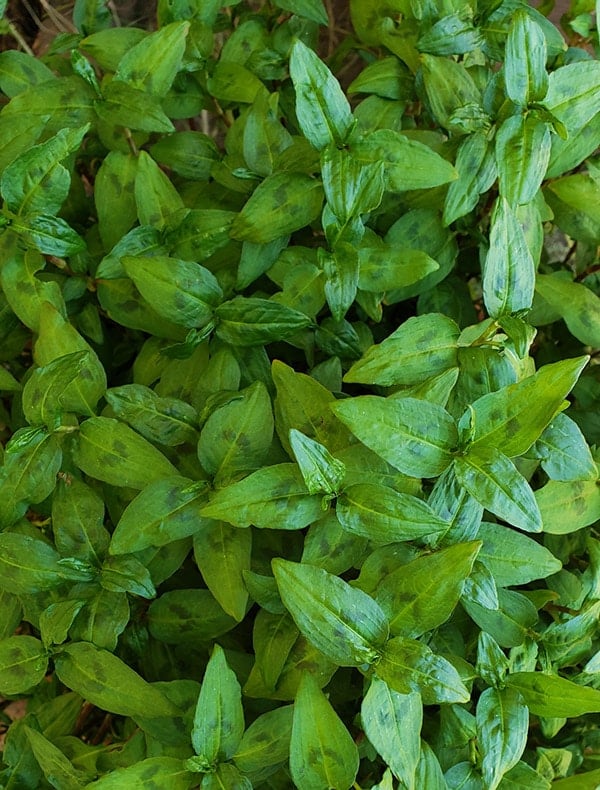
Rau ram is to Southeast Asia what cilantro is to Mexico: It’s on everything, and it’s amazing… well, if you like cilantro, because they taste similar.
Persicaria odorata is its Latin name, and this cousin of knotweed and smartweed normally grows in wet places all over Southeast Asia. It does not grow wild in North America to my knowledge, although I am sure someone reading this somewhere knows of a patch of gone feral.
I’ll walk you through how to cook with rau ram as well as how to grow it, and I’ll offer you a simple recipe that uses it as a main flavor component.
Growing Rau Ram
Rau ram grows very well in gardens, however, and doing so will help you out if you like to eat cilantro. Why? Because as anyone who has ever grown cilantro knows, the plant bolts almost immediately in hot weather. Rau ram does not bolt at all, or at least my three-year-old plant does not. Yes, you heard right: My plant is three years old. It lives in a pot.
Now even here in Sacramento, it will get cold enough to kill it in winter, thus the pot. Also, rau ram likes a lot of moisture, so here in this semi-desert of ours, it needs to be in the shade and watered every day that it hits 100°F, which is often in summer. I imagine rau ram would grow really well on the muggy Gulf Coast or Florida.
This plant has other names: Vietnamese coriander, laksa leaf, Vietnamese mint, and praew leaf.
I strongly recommend buying a rau ram plant, rather than seeds. They are not expensive, and many places online sell them. I bought mine on Etsy.
It grows quickly, and would likely be invasive — like other knotweeds — if you put it into the ground in, say, Louisiana. My one little seedling filled a three-gallon pot in less than six months, and unless you cook Southeast Asian food all the time, you will likely only need one.
If you want to share rau ram with friends, you can divide a plant and pot up the other half as a gift, or you can root cuttings in water (like potatoes) and then plant them in soil.
Bring the plants inside if there is a danger of frost, and rau ram will more or less stop growing once the light levels dip in late October. But fear not, it’ll come back in spring.
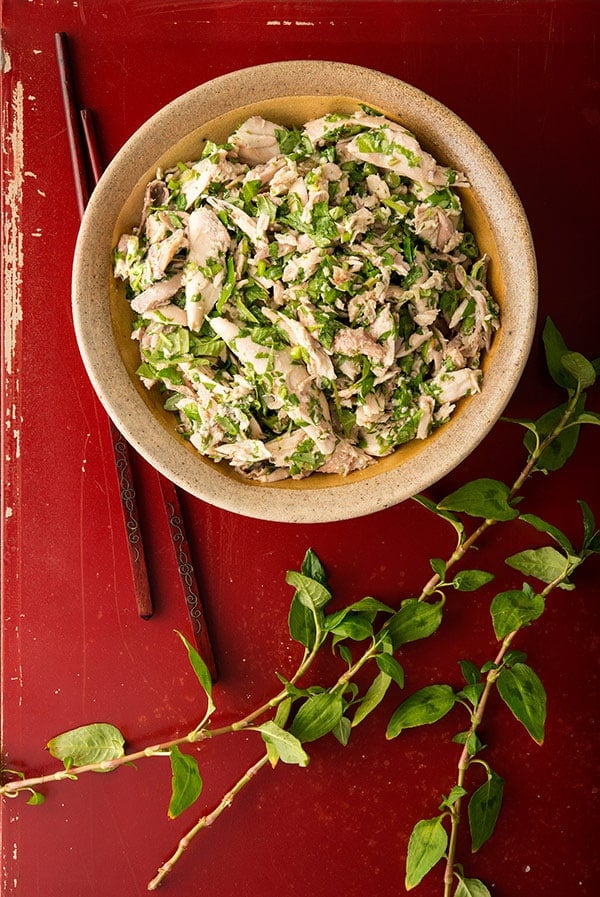
Cooking Rau Ram
First and foremost, the big question in everyone’s mind: Will rau ram taste like soap to you if you get that weird effect from cilantro? No. These plants are not botanically related, and anecdotal reports are that avowed cilantro haters can eat rau ram — now mind you, this is for people who get the soapy effect, not people who simply dislike the flavor of cilantro. Can’t help you there.
Second most important thing to know is that this herb is always used fresh, never dried. It’s one of those herbs that loses almost everything dried. I imagine you can freeze it, but I have not tried.
Rau ram is also milder than cilantro, with hints of mint in there, too. It is similar to, but not identical, to cilantro.
You see it in cold salads mostly in Southeast Asia. Larb chief among them, as well as shredded meat and vegetable salads. The Dai style shredded quail salad below is representative of this.
Other good options are to put them into spring and summer rolls (not the fried ones), or add to curry or soup at the last minute. It is really good as an herb for Vietnamese pho or shaking beef. I also like it a lot with Vietnamese crispy fish.
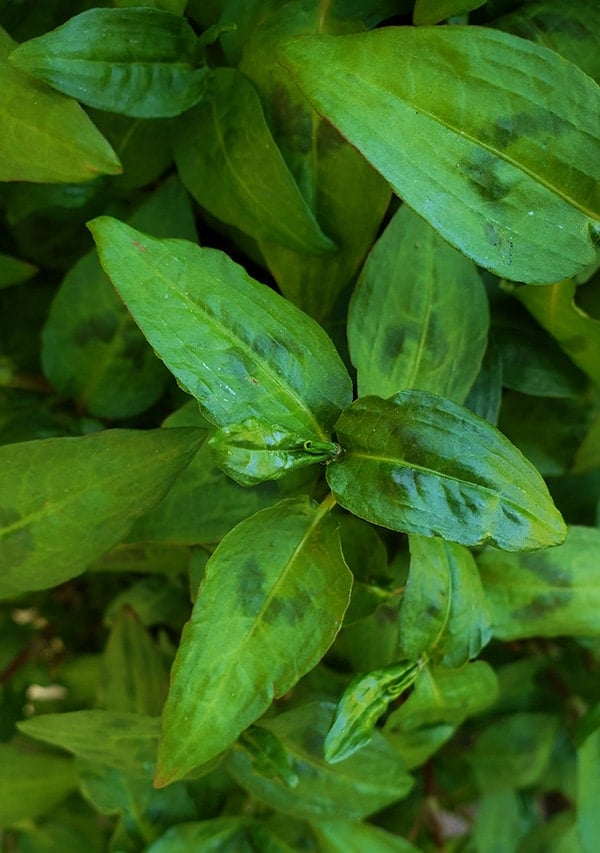
You see rau ram in hot and sour dishes, too.
I mostly pick stems when I need them, low to the base of the plant, then strip off the leaves for the dish. You can use the stems in making broth and stock, too, again only in the last 15 minutes of cooking or so.
Dai Lime Quail
Ingredients
BROTH
- 8 quail
- 1 quart chicken broth
- 1 leek, chopped
- A 2-inch piece of ginger, smashed
- 2 star anise (optional)
- Salt
SALAD
- 1 cup rau ram leaves
- 1/2 cup cilantro or mint, chopped
- 5 hot fresh chiles, such as Thai or pequin
- 2 cloves garlic, minced
- 2 tablespoons sesame oil
- 2 limes, zested and juiced
Instructions
- Put the quail into a soup pot and add the chicken broth, plus enough water to cover by about an inch. Bring to a gentle simmer, and skim off any froth. Add the remaining broth ingredients and simmer gently until the quails are tender, usually about 90 minutes to 2 hours.
- Remove the quail and, when cool enough to handle, shred the meat and reserve. Strain the broth and reserve for another use. Discard the quail bones.
- Add the shredded quail to the salad ingredients and serve either chilled or at room temperature.
Notes
Nutrition
Nutrition information is automatically calculated, so should only be used as an approximation.
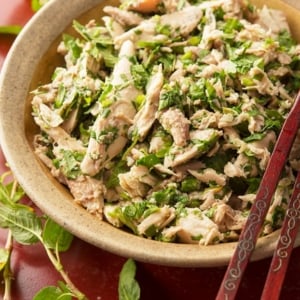
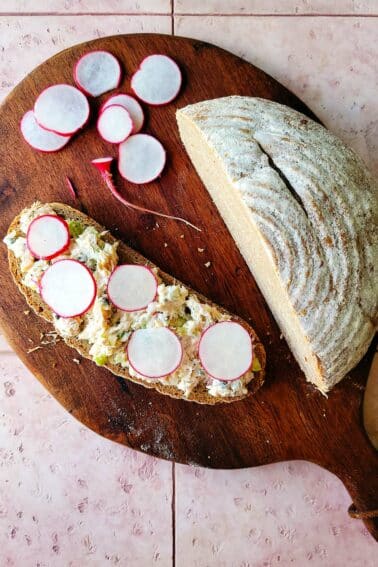
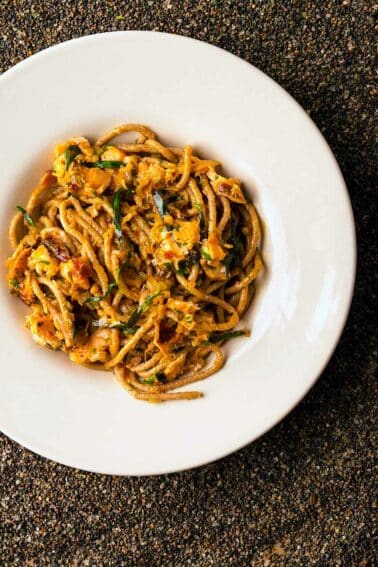

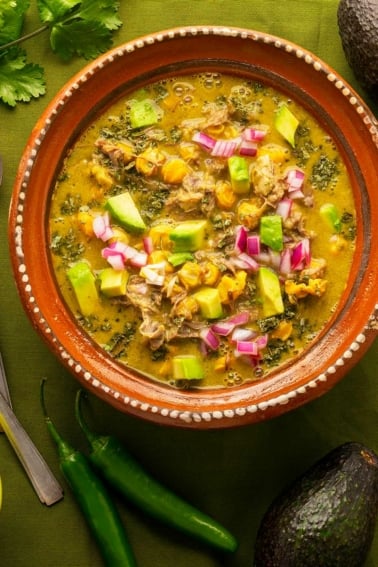
I seem to have a patch growing in my gravel driveway?? I had heard of it but never seen it until your picture here, and as soon as I saw your pic I thought … that’s familiar. And just now walking the dog in the yard, I found why it looks familiar. https://imgur.com/gallery/NiNDFMz
I’ll try propagating it as James describes above.
This driveway is new — the house was built 4 years ago — but it has also given us morel mushrooms, somehow?! I should find out where the contractor got the gravel, apparently it’s full of stuff.
Every spring I buy a tray of rau ram from a local Asian market. I cut the bottoms of the stems and put them in some water on the kitchen counter. In a week or so they have roots growing out of the leaf nodes and I put them in small pots outside. After another week they go in the ground. I end up with plenty of plants to share with friends and neighbors too. All for like 2.50$. I’ve been tempted to try and sell the plants back to the store for them to sell!
How much shredded meat am I supposed to end up with for the correct proportions? I have no idea how much meat comes off 8 quail. Thanks.
Not trying to second-guess Hank, but I think that the correct proportions are already there. I don’t know how much meat comes off 8 quail, but as the recipe is for 4 people and I was only cooking for 2, I would halve everything.
Simples!
Beth: As much as you can muster! I found that I can get about 2/3 to 1 cup of meat from a big quail. If you are using store-bought, they are small, so maybe use 10. It’s not an exact science, and I mostly used quail because I had them in the freezer. Non-hunters should use a good chicken instead. That’s that they do in China.
Great herb and very versatile. Greatly used raw with lettuce, other herbs, dipping fish sauce and grilled meats.
Is rau \ram related to culantro?
Jerry: Only in flavor. Not botanically.